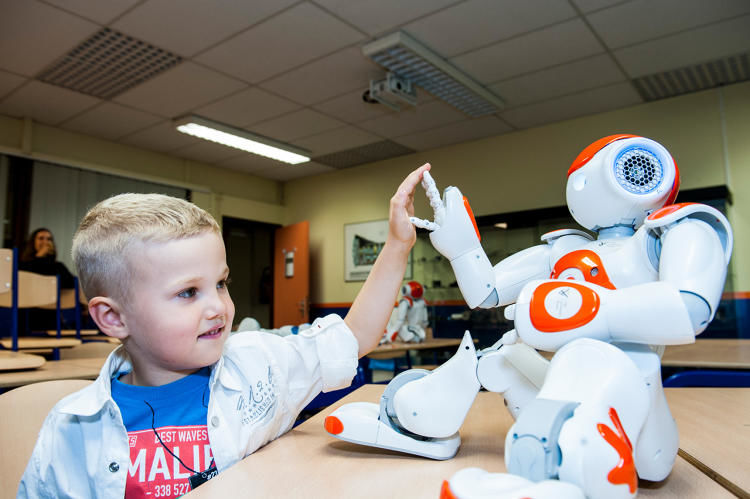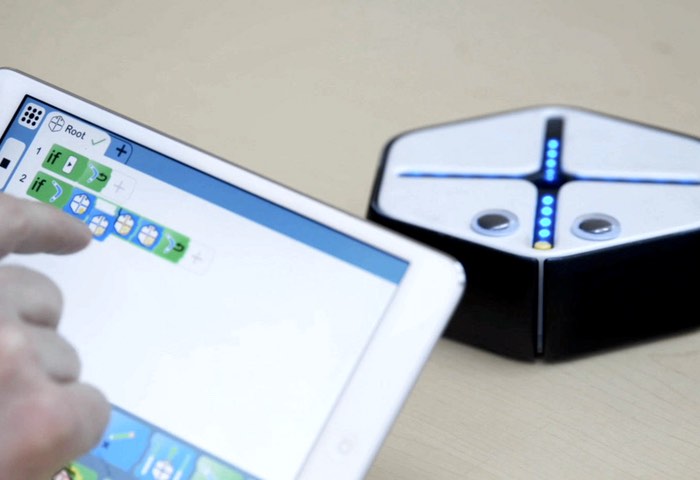5 teaching robots of our present and future
AI • Feb 07,2017

5 teaching robots of our present and future

Robots are everywhere. Humans are using robots in cleaning, cooking, practicing law, building cars and appliances. Sure, artificially intelligent robot teachers are coming to a classroom near you. We analyzed current developments in artificial teaching assistants and here’s what our present and future looks like.
Jill Watson

In 2016 Georgia Institute of Technology replaced one of their teaching assistants with a machine. Students had no idea one of their teaching assistants, Jill Watson, was a robot. Student Tyson Bailey began to wonder if Jill was a computer. ‘We were taking an AI course, so I had to imagine that it was possible there might be an AI lurking around,’ said Bailey. Jill Watson, an IBM-designed bot, has been helping graduate students at Georgia Institute of Technology solve problems with their design projects since January.
Responding to questions over email and posted on forums, Jill had a casual, colloquial tone, and was able to offer nuanced and accurate responses within minutes. Her replies included ‘yep!’ and ‘we’d love to’. The bot was named Jill Watson after the IBM Watson analytics system that all her responses come from – essentially her brain. She was trained by Georgia Tech researchers before being thrown into the mix with nine other teaching assistants.
L2TOR

Scientists in Germany, Turkey, the Netherlands, and the U.K. are currently working on language-teaching machines more complex than anything used before. These devices will help students learn basic vocabulary and simple stories, using microphones to listen, cameras to watch, and artificial neural networks that will analyze all the information that’s collected. The machines are part of L2TOR, a program funded by the European Union to develop artificially intelligent teachers for preschool-aged children. But the machines won’t only teach and collect data on their students’ language skills—they’ll also monitor things like joy, sadness, boredom, and confusion. Human teachers can see and hear their students and make sense of all nonverbal cues they get from the class; these machines are being designed to do the same.
The L2TOR researchers who launched their project earlier this month, still have a few years before they can measure their technology against human educators, but similar projects have offered some hints about potential challenges. FACET, a commercially available image-processing software that analyzes 19 different facial-muscle movements, works with nearly 80 percent accuracy. Earlier this year, a research team at the University of Notre Dame used it to identify children’s boredom, confusion, and delight as they played educational games, using videos taken with laptop cameras in real classrooms.
Projo

In Harlem school, a Nao robot created in France, nicknamed Projo helps students improve their math skills. It’s small, about the size of a stuffed animal, and sits by a computer to assist students working on math and science problems online. Sandra Okita, a teacher at the school, told The Wall Street Journal the robot gauges how students interact with non-human teachers. The students have taken to the humanoid robotic peer, who can speak and react, saying it’s helpful and gives the right amount of hints to help them get their work done.
Root

Researchers at Harvard’s Wyss Insitute for Biologically Inspired Engineering created the code-teaching robot Root. Root brings coding to life in an extremely fun and approachable way. Kids with no experience in coding can be programming robots in a matter of minutes. Root is a robot that is programmed using a tablet interface called Square. Root has light and color sensors, bumpers, and a touch surface that enable it to respond to the physical world. In a classroom setting, Root would “drive” along a magnetic dry-erase whiteboard at the front of the class, giving the young programmers an instant, physical manifestation of the code.
Baxter and robots that teach each other

Baxter robot, an industrial machine produced by Rethink Robotics, moves its right arm noisily back and forth above the object, taking multiple pictures with its camera and measuring depth with an infrared sensor. Then, with its two-pronged gripper, it tries different grasps that might allow it to lift the brush. Researchers have gathered—and are now sharing—data on roughly 200 items, starting with such things as a child’s shoe, a plastic boat, a rubber duck, a garlic press and other cookware.
Projects like this are possible because many research robots use the same standard framework for programming, known as ROS. Once one machine learns a given task, it can pass the data on to others—and those machines can upload feedback that will in turn refine the instructions given to subsequent machines. Such progress might seem incremental now, but in the next five to 10 years we can see robots that teach each other.
While a couple of years ago researchers saw classroom robots not as replacements for teachers but as whimsical assistants, now situation changed completely. Countries, cities, schools and universities are using artificial intelligence powered robots to teach students and schoolers math, science, literature and other studies. In near future, or 5 – 10 years, we can expect to see an explosion in the ability of robots, including opportunities to teach each other and create an army of artificial teaching assistants.
Author: AI.Business
If you like our articles, please subscribe to our monthly newsletter:
[mc4wp_form id=”763″]
Previos Article Drones: Future of War and New Paradigm of Warfare
Next Article Artificial intelligence in bridge engineering